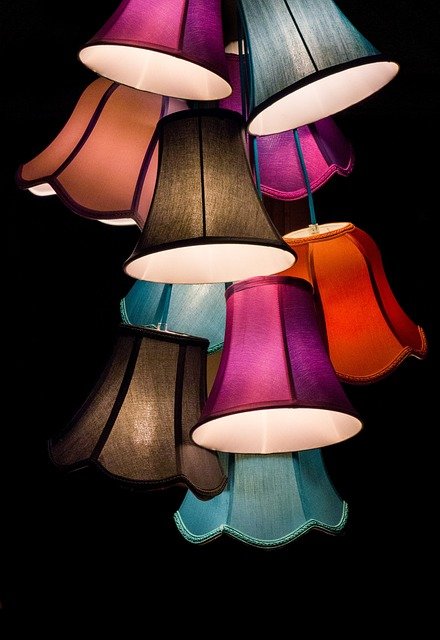Sculptural Lighting: Illuminating Spaces with Artistic Flair
The intersection of art and functionality has given birth to a captivating trend in home decor: sculptural lighting. This innovative approach to illumination transforms ordinary fixtures into extraordinary focal points, blurring the lines between practical necessity and artistic expression. As homeowners increasingly seek unique ways to personalize their spaces, sculptural lighting emerges as a powerful tool for creating ambiance, sparking conversation, and elevating the overall aesthetic of any room.

The Evolution of Lighting as Art
Lighting has long been an essential component of interior design, but its role has evolved significantly over the years. From the functional gas lamps of the 19th century to the ornate chandeliers of the Baroque era, lighting fixtures have always reflected the aesthetic sensibilities of their time. However, it wasn’t until the mid-20th century that designers began to truly explore the artistic potential of lighting.
The Modernist movement, with its emphasis on form and function, paved the way for more experimental approaches to lighting design. Iconic pieces like Poul Henningsen’s PH Artichoke lamp and Achille Castiglioni’s Arco floor lamp challenged traditional notions of what a light fixture could be, setting the stage for the sculptural lighting trend we see today.
Contemporary Interpretations of Light as Sculpture
In recent years, advances in technology and materials have allowed designers to push the boundaries of lighting even further. LED technology, in particular, has revolutionized the field, enabling the creation of intricate, lightweight designs that would have been impossible with traditional bulbs. This has given rise to a new generation of lighting designers who approach their work with the mindset of sculptors rather than electricians.
Contemporary sculptural lighting often draws inspiration from nature, abstract art, and architecture. Pieces might mimic the organic forms of plants or marine life, or they might explore geometric patterns and shapes. Some designers experiment with unexpected materials like paper, wood, or recycled plastics, while others employ cutting-edge technologies like 3D printing to create complex, otherworldly forms.
The Impact on Interior Design
The rise of sculptural lighting has had a profound impact on interior design as a whole. Where once lighting fixtures were often an afterthought, they are now frequently the starting point for entire room concepts. Designers and homeowners alike are recognizing the power of a statement light fixture to define a space and set the tone for the entire decor scheme.
One of the key advantages of sculptural lighting is its versatility. A dramatic chandelier can serve as the centerpiece of a formal dining room, while a collection of abstract pendant lights can add personality to a minimalist living space. In bedrooms, sculptural table lamps or wall sconces can create a sense of intimacy and luxury. Even in bathrooms and kitchens, traditionally utilitarian spaces, sculptural lighting can inject an element of surprise and delight.
Balancing Form and Function
While the aesthetic appeal of sculptural lighting is undeniable, it’s important to remember that these fixtures must still fulfill their primary purpose of illuminating a space. Successful sculptural lighting designs strike a balance between form and function, creating pieces that are beautiful both when lit and unlit.
This often involves careful consideration of materials and how they interact with light. Translucent or reflective surfaces can create interesting plays of light and shadow, while opaque materials might be used to direct light in specific ways. Many sculptural fixtures also incorporate adjustable elements or dimmable lights, allowing users to customize the lighting to suit different moods or activities.
Incorporating Sculptural Lighting in Your Home
For those looking to embrace the sculptural lighting trend, there are options to suit every style and budget. High-end designer pieces can serve as investment art pieces, while more affordable options are increasingly available from mainstream retailers. Some key considerations when choosing sculptural lighting include:
-
Scale: Ensure the fixture is proportionate to the space. A large, dramatic piece can work well in a room with high ceilings, while smaller, more delicate designs might be better suited to intimate spaces.
-
Style: While sculptural lighting can make a statement, it should still harmonize with the overall aesthetic of your home. Consider the existing architecture and decor when making your selection.
-
Functionality: Think about the primary purpose of the lighting. Do you need task lighting for a work area, ambient lighting for a living space, or accent lighting to highlight specific features?
-
Installation: Some sculptural fixtures may require professional installation, particularly if they are large or complex. Factor this into your planning and budget.
The Future of Sculptural Lighting
As technology continues to advance, the possibilities for sculptural lighting seem limitless. We’re already seeing the integration of smart home features into artistic light fixtures, allowing users to control color, intensity, and even movement via smartphone apps or voice commands. Some designers are experimenting with interactive lighting that responds to sound or motion, creating dynamic, ever-changing installations.
There’s also a growing focus on sustainability in lighting design, with many creators exploring eco-friendly materials and energy-efficient technologies. This aligns with broader trends in interior design towards more environmentally conscious choices.
Sculptural lighting represents a exciting fusion of art, design, and technology. By elevating lighting from a mere utility to a form of artistic expression, it offers a unique way to personalize and enhance our living spaces. As this trend continues to evolve, it promises to bring new dimensions of creativity and innovation to the world of interior design, transforming the way we think about and interact with light in our homes.





